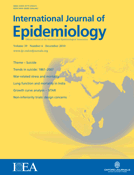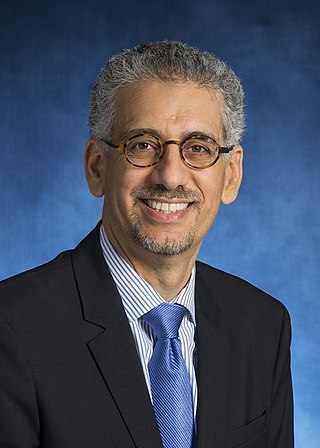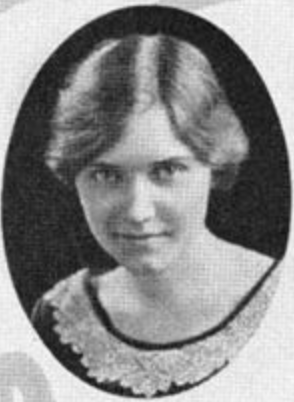
Alexander Duncan Langmuir was an American epidemiologist who served as Chief Epidemiologist of the Centers for Disease Control and Prevention (CDC) from 1949 to 1970, developing the Epidemic Intelligence Service (EIS) as a training program for epidemiologists.

The International Journal of Epidemiology is a bimonthly peer-reviewed medical journal covering research in epidemiology. It is the official journal of the International Epidemiological Association and is published by Oxford University Press. The journal is a member of the Committee on Publication Ethics. The editor-in-chief is Stephen Leeder.
Epidemiologic Reviews is an annual peer-reviewed scientific journal covering epidemiology and published by Oxford University Press on behalf of the Johns Hopkins Bloomberg School of Public Health. The Journal was established in 1979 by Neal Nathanson and Philip E. Sartwell. The longest running editor-in-chief was Haroutune Armenian. The current editor-in-chief is David Celentano of the Johns Hopkins Bloomberg School of Public Health.

Dr. Moyses Szklo is a Brazilian epidemiologist and physician scientist. He is currently University Distinguished Service Professor of Epidemiology and Medicine at the Johns Hopkins University, Editor-in-chief Emeritus of the American Journal of Epidemiology, and director of the Johns Hopkins Summer Institute of Epidemiology and Biostatistics. Szklo has published over 300 articles in peer-reviewed journals as well as a major textbook of epidemiology. He has led several major epidemiologic societies and studies and has been lecturing and leading courses all over the world, including Spain, Italy, Israel, Brazil, and Mexico.
Paul Kieran Whelton is an Irish-born American physician and scientist who has contributed to the fields of hypertension and kidney disease epidemiology. He also mentored several public health leaders including the deans of the schools of public health at Johns Hopkins and Columbia. He currently serves as the Show Chwan Health Care System Endowed Chair in Global Public Health and a Clinical Professor in the Department of Epidemiology at the Tulane University School of Public Health and Tropical Medicine. He is the founding director of the Welch Center for Prevention, Epidemiology, and Clinical Research at Johns Hopkins University.
David DuPuy Celentano is a noted epidemiologist and professor who has contributed significantly to the promotion of research on HIV/AIDS and other sexually transmitted infections (STIs). He is the Charles Armstrong chair of the Department of Epidemiology at the Johns Hopkins Bloomberg School of Public Health. He holds joint appointments with the school’s departments of Health Policy and Management, Health Behavior and Society, and International Health, and the Johns Hopkins University School of Medicine’s Division of Infectious Diseases.

Dr. Philip E. Sartwell (1908–1999) was a noted epidemiologist and professor at the Johns Hopkins School of Hygiene and Public Health.
Leon Gordis was an American epidemiologist, professor and author, whose textbook Epidemiology provided a foundation for the understanding of epidemiologic principles and clinical applications.
Steven Coughlin is an American epidemiologist and author who received international attention for his Congressional testimony in support of U.S. veterans. At the time of this entry, he is a tenured Professor of Epidemiology at Augusta University in Augusta, GA. Coughlin has published over 366 scientific articles and was the lead author of the first and second editions of Case Studies in Public Health Ethics, and lead editor of the first, second, and third editions of Ethics and Epidemiology. In addition, Coughlin was the author of The Principle of Equal Abundance, The Nature of Principles, and the first and second editions of Ethics in Epidemiology and Public Health Practice: Collected Works. Most recently, Coughlin was co-editor of Handbook of Community-based Participatory Research and Black Health in the South.
Ralph R. Frerichs is professor emeritus of epidemiology at UCLA where he was active as a full-time faculty member in the School of Public Health for 31 years and as the Epidemiology department chair for 13 years, before retiring in late 2008. Both at UCLA and in international workshops he taught epidemiologic methods, the use of rapid community-based surveys, epidemiologic simulation models for focused research, and screening and surveillance methods for HIV/AIDS and other diseases.
The Society for Epidemiologic Research is a learned society dedicated to epidemiology. It was originally proposed in 1967 by Abraham Lilienfeld, Milton Terris, and Brian MacMahon, and was founded the following year. Their motivation in founding SER was to provide an annual meeting where junior faculty in epidemiology departments and graduate students could present their ongoing research to senior epidemiologists and receive criticism, comments, and encouragement. An additional goal was to promote the exchange of ideas between epidemiologists and statisticians.

Elizabeth Louise Barrett-Connor was Chief of the Division of Epidemiology and Distinguished Professor at the University of California, San Diego. She investigated the role of hormones in pathogenesis of cardiovascular disease, diabetes and osteoporosis.
Germaine M. Buck Louis was the Dean of the George Mason University College of Health and Human Services and professor in Mason’s Department of Global and Community Health. She led the College in becoming Virginia's first accredited College of Public Health prior to her retirement in 2022. Her expertise focuses on environmental exposures and human health, particularly human reproduction and pregnancy. Prior to her appointment as dean at George Mason in 2017, she was the founding Director for the Division of Intramural Population Health Research at the Eunice Kennedy Shriver National Institute of Child Health and Human Development.

John Andrew Crump is a New Zealand-born infectious diseases physician, medical microbiologist, and epidemiologist. He is Professor of Medicine, Pathology, and Global Health at the University of Otago and an adjunct professor of medicine, Pathology, and Global Health at Duke University. He serves as Director of the Otago Global Health Institute, one of the university's research centres. His primary research interest is fever in the tropics, focusing on invasive bacterial diseases and bacterial and viral zoonoses.

Josef Coresh is an American epidemiologist. He is the Terry and Mel Karmazin Professor of Population Health, a Professor in the Department of Medicine, and the Founding Director of the Optimal Aging Institute at NYU Langone Health. He was previously the inaugural George W. Comstock Professor in the Department of Epidemiology at Johns Hopkins University, and the director of both the Cardiovascular Epidemiology Training Program and the George W. Comstock Center for Public Health Research and Prevention at Johns Hopkins School of Medicine.

Anne Magdalen Bahlke was an American physician, medical researcher, and public health official.

Shih-Jen Hwang is a Taiwanese-American biostatistician and epidemiologist. She is a staff scientist in the Laboratory for Cardiovascular Epidemiology and Genomics at the National Heart, Lung, and Blood Institute. She is an investigator on the Framingham Heart Study.
Frank Erwin Speizer is an American physician and epidemiologist, currently Professor of Environmental Health and Environmental Science at Harvard T.H. Chan School of Public Health, and Edward H. Kass Distinguished Professor of Medicine at Brigham and Women's Hospital, Harvard Medical School. He is best known for his work on two major epidemiological cohort studies: the Nurses' Health Study, which explored women's illnesses and health risk factors, and the Harvard Six Cities study, which definitively linked air pollution to higher death rates in urban areas.
George C. Payne was an American tropical physician and director for the International Health Board of the Rockefeller Foundation for Mexico and Trinidad in the 1920s. He also worked as a physician for the state health board in Virginia in 1923. He investigated hookworm disease between 1921 and 1934, and was known for studying the links between hookworm, tropical sprue and anemia in Trinidad, as well as Puerto Rico at the School of Tropical Medicine, where he worked with William Bosworth Castle and Cornelius P. Rhoads. In 1929 he published a study on effective footwear to reduce worm infestation. He became involved in the Rhoads scandal of the 1930s. He was the first to use a type of mosquito bait trap or stable trap in 1923 in the West Indies. He also studied diet and nutrition in Mexico from 1944 to 1948.
Susan Mary Bennett Morton is a New Zealand epidemiologist, and is a full professor of public health at the University of Technology Sydney, specialising in longitudinal studies of public health. In 2019, Morton was appointed a Member of the New Zealand Order of Merit for services to epidemiology and public health research.








